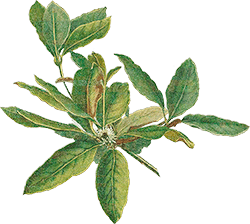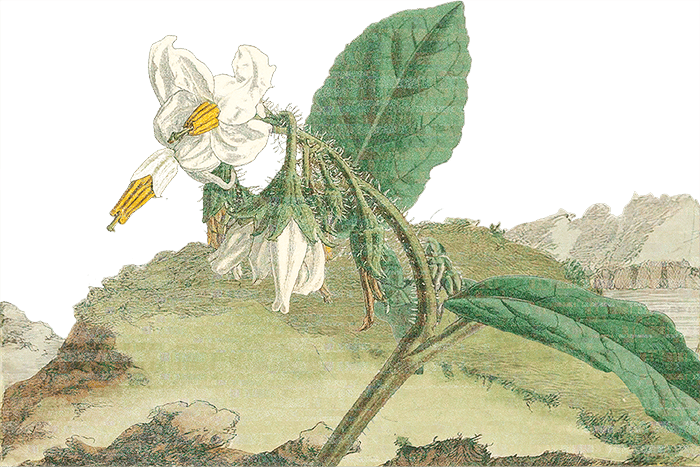On today’s show we learn about the Bonaire Palm, a critically endangered palm native to the island of Bonaire in the southern Caribbean Sea.
Rough Transcript
Intro 00:05
Welcome to Bad at Goodbyes.
On today’s show we consider the Bonaire Palm
Species Information 02:05
The Bonaire Palm is a critically endangered palm native to the island of Bonaire in the southern Caribbean Sea.
Description
The Bonaire Palm is a recently described species, meaning that it was formally identified and thoroughly documented, and given an agreed upon place in our scientific taxonomy of life. Just in 2021. Scientists use words “describe” and “classify” in regard to new species, in part to avoid language like “unknown” or “discovered” because of course the Bonaire Palm wasn’t unknown, the palm has existed on Bonaire for a long time, indigenous locals have a name for it, it’s part of the landscape and ecosystem. So instead we say describe to mean that researchers have now studied the species closely enough to determine it is distinct from other known species.
And so in the case of the Bonaire Palm, recent genetic analysis confirmed the distinction between it and it’s closest relative Sabal antillensis, researchers observed a unique genetic profile in the Bonaire Palm, indicating a distinct evolutionary lineage.
Mature Bonaire Palm can reach heights up to 23 feet, with a crown of dense stiff spikey fan-shaped leaves that shoot outward in all directions, and with a trunk that is roughly a foot in diameter. Its bark is grayish tan in color and generally smooth though marked by persistent raised leaf scars. These are marks, kind of notches, left on the trunk where old leaves have fallen off. As palm trees grow, they produce new leaves at the top of their trunk, and older leaves below die and fall off. This process, called Abscission, results in visible scarring on the Bonaire Palm’s trunk.
Abscission basically means shedding, and I’d like to spend a brief moment unpacking the idea, as it is a key widespread adaptation observed across all kinds of life on our planet. A dramatic example are lizards, like some gecko and skink that can shed their tail to escape predators. Or the arctic hare who sheds its white winter coat in the springtime, growing a brownish tan coat to replace it, a new camouflage for after the snowmelt. Or when the cherry blossom sheds its unpollinated flowers, to preserve and redirect nutrients to new growing fruit. It is autumn where I live in the northern hemisphere and we’re experiencing a kind of seasonally-defining abscission, the leaf fall from deciduous trees.
In plants, both deciduous and evergreen, the abscission process goes roughly like this:
First, Resorption in which the plant breaks down chlorophyll and pulls in any remaining nutrients from the leaves; chlorophyll is green and its breakdown and absorption result in the changing leaf color. And so following resorption the plant begins to form a durable waterproof protective cellular layer between the leafstem and the branch or trunk. And then detachment, the leaf falls off.
In the case of the Bonaire Palm, which is an evergreen, when new leaf growth above blocks light from the leaves below, reducing their photosynthetic efficiency the abscission process begins, chlorophyll breaks down and we’ll see lower leaves on the palm yellow and brown and eventually detach and fall off, revealing the new protective cellular layer where the leaf met the trunk. Bringing this all the way back around, that layer is the leaf scars that pock the trunk’s bark, as it grows.
In The Dream
————
In the dream, another story from the buddha. In the dream two monks quietly walk the countryside, on their way to the cherry blossom festival, until they reach a flooded river. In the dream the bridge is destroyed, washed out presumably in the recent rains. The younger monk tests the water and finds its temperature and its current manageable, though the monks will surely be soaked up to their chests.
Nevertheless they are about to proceed across when two princes call out to them. Call out to them, using demeaning and rude language, that I would prefer not to repeat here. They call out demanding to be carried across the river, that their fine clothing and gregarious temperament would be spoiled by the riverwater, and the monks plain robes and low station could not possibly be further impoverished. The princes laughed with each other at this slight, like many a powerful man who mistakes his meanness for humor.
And yet these monks, who hold their vows sacred and have dedicated their lives to service, oblige. Hoisting the princes onto their shoulder and trudging the river, the whole passage fielding complaint from the princes and the occasionally though surely intentional royal foot rubbed against cheek and mouth.
Safely across, the monk deposited the princes and resumed their journey, receiving, of course, neither coin nor thanks. As they walked, their robes drying in the noon sun, the elder monk muttered under his breath. How rude those men, their presumption, their ingratitude. This continued for many miles, each footfall a new grumbled grievance. Eventually, the younger monk turned to the older monk, softly parting his dark cloud and said “my friend, you must be weary. I set my prince back at the riverbed, but you, all these miles later, are carrying yours still.”
May we all set down our grievance and walk toward blossoming. In the dream.
————
Reproduction
The Bonaire Palm produces flower clusters, inflorescences, of small white flowers that emerge from within its crown of leaves. I could not find definitive information about Bonaire Palm pollination, but we can hypothesize based on what we know about other palms in the sabal genus, that it is likely insect pollinated, by bees, beetles and flies.
After successful pollination, the Bonaire Palm’s flowers develop into small, black fleshy fruits, each containing a single seed. Again we don’t have detailed research on seed distribution, but the fruit is likely dispersed by animals that consume them, spreading the seeds throughout their habitat, in their excrement.
Habitat
The Bonaire Palm is native to the island of Bonaire in the southern Caribbean Sea about 50 miles from the northern coast of Venezuela. The island is small, roughly 110 square miles, approximately the same size as Brooklyn.
The Bonaire Palm’s current population is concentrated in a roughly one sq mile area in the southern part of the island, west of Lac Bay and north of the Cargill salt flats. This is a low-lying limestone scrubland, just 15 feet above sea level. It’s an arid sun-drenched landscape. The terrain is relatively flat and the soil is thin and poor in nutrients.
This is the Aruba-Curaçao-Bonaire Cactus Scrub ecoregion. It is hot and dry, with summer highs reaching into the 90s°F and winter lows rarely dipping below the 70s°F. Rain is scarce, averaging about 20 inches per year, often concentrated in short, intense bursts, from December to March.
The Bonaire Palm shares its habitat with Bonaire Lora, Southern Yellow Bat, Organpipe Cactus, Green Iguana, Bonaire Whiptail, Spectacled Tegu, Bonaire Barn Owl, Turnip-Tailed Gecko, Hedgehog Cactus, Acacia Trees, Brown-Throated Parakeet, Jumping Ground Bug, Yellow-Shouldered Amazon Parrot, Bonaire Anole, Bonaire Green Parrot, Flamingos, Queen Of The Night Cactus, Candy-Striped Hermit Crab, and many many more.
Threats
Historically, habitat loss, due to human development has significantly reduced the Bonaire Palm population. In the 20th century, agriculture and construction reduced the palm’s viable available habitat. In the 21st century, increasing tourism is perpetuating this threat.
Additionally, non-native human introduced domesticated and also now feral livestock, like goats and donkeys overgraze the land, preventing the successful establishment of young palm seedlings and stressing the palm’s habitat in general.
Human induced climate change is an imminent threat, with global warming resulting in changing weather patterns, increased wildfires, drought, and the potential for sea level rise which is forecasted at roughly 5ft in the next 70 years.
Conservation
On site conservation efforts have commenced, beginning with the construction of an exclusion fence, to protect part of the Bonaire Palm habitat from grazing by roaming goats and donkey. And a Spring 2024 report observes noticeable increase in new seedlings within the fenced area.
Offsite efforts include the successful recruitment of seedlings and of seedbanking at the Tera Barra Native Garden (on Bonaire) and at the Montgomery Botanical Center, in Coral Gables FL.
Nevertheless the Bonaire Palm has been considered critically endangered on the IUCN Red List since 2021 and their population is considered in decline. Our most recent counts estimate that less than 25 Bonaire Palm remain in the wild.
Citations 20:11
Dutch Caribbean Nature Alliance. BioNews, May 8, 2024 – https://dcnanature.org/palmdiversity/
Encyclopedia of Earth. Fund, W. (2012). Aruba-Curaçao-Bonaire cactus scrub. – http://editors.eol.org/eoearth/wiki/Aruba-Curaçao-Bonaire_cactus_scrub
“Ex Situ Conservation of Large and Small Plant Populations Illustrates Limitations of Common Conservation Metrics.” M. Patrick Griffith, Falon Cartwright, Michael Dosmann, Jeremie Fant, Ethan Freid, Kayri Havens, Brett Jestrow, Andrea T. Kramer, Tracy M. Magellan, Alan W. Meerow, Abby Meyer, Vanessa Sanchez, Eugenio Santiago-Valentín, Emma Spence, Jose A. Sustasche-Sustache, Javier Francisco-Ortega, and Sean Hoban. International Journal of Plant Sciences, Volume 182, Number 4. – https://doi.org/10.1086/713446
“Genomic patterns of native palms from the Leeward Antilles confirm single-island endemism and guide conservation priorities.” Clugston, J.A.R., Coolen, Q., Houtepen, E. et al. Conservation Genetics Vol. 25, 985–997 (2024). – https://doi.org/10.1007/s10592-024-01618-6
IUCN - https://www.iucnredlist.org/species/207984529/207984533
“Sabal lougheediana (Arecaceae), A Critically Endangered, Endemic Palm Species from Bonaire.” M. Patrick Griffith, Quirijn Coolen, Michelle Barros and Larry R. Noblick. 2019. Phytotaxa. Vol 420 No. 2; 95–101. – https://doi.org/10.11646/phytotaxa.420.2.1
“Sabalpalm (Sabal antillensis) recovery over 40 years: lessons for successful palm conservation.” J. de Freitas, J. Camilleri, S. van Eijk, V. Posno, I. Valdes, Q. Coolen, J. van Blerk, M. P. Griffith. 2019. Palms Vol. 63, No. 2, 57-68 – https://palms.org/wp-content/uploads/2019/06/PALMSv63n2p057-068-Griffiths-Sabalpalm.pdf
Stinapa Bonaire – https://stinapabonaire.org
Music 21:55
Pledge 27:59
I honor the lifeforce of the Bonaire Palm. I will commit its name to my record. I am grateful to have shared time on our planet with this being. I lament the ways in which I and my species have harmed and diminished this species.
And so, in the name of the Bonaire Palm I pledge to reduce my consumption. And my carbon footprint. And curb my wastefulness. I pledge to acknowledge and attempt to address the costs of my actions and inactions. And I pledge to resist the harm of plant or animal kin or their habitat, by individuals, corporations, and governments.
I pledge my song to the witness and memory of all life, to a broad celebration of biodiversity, and to the total liberation of all beings.

